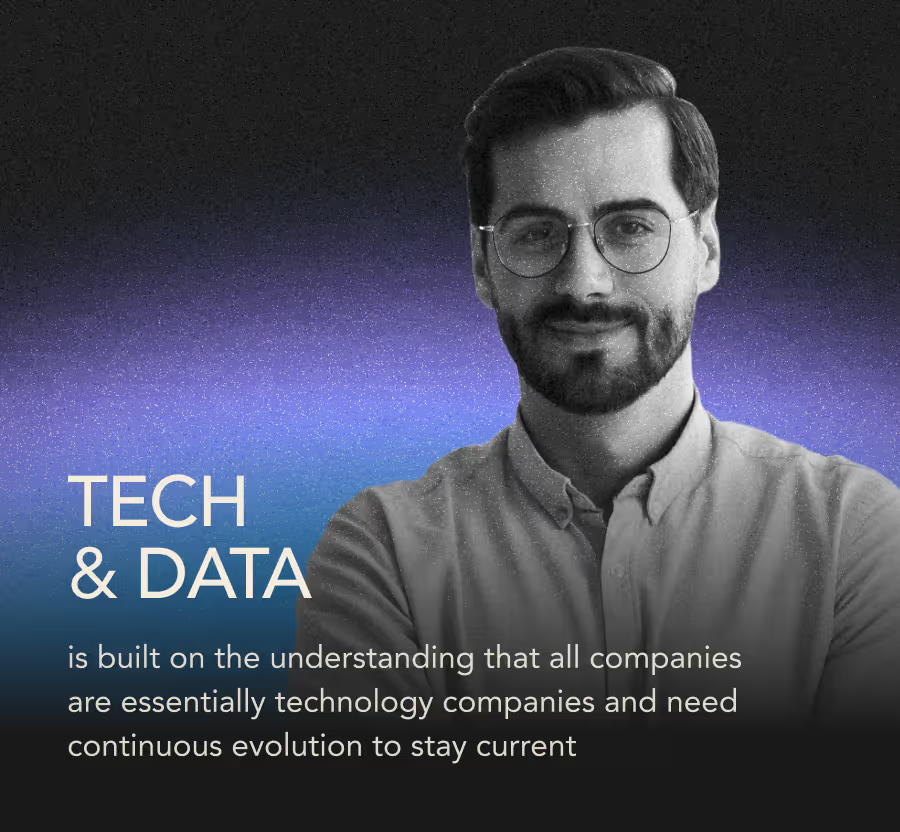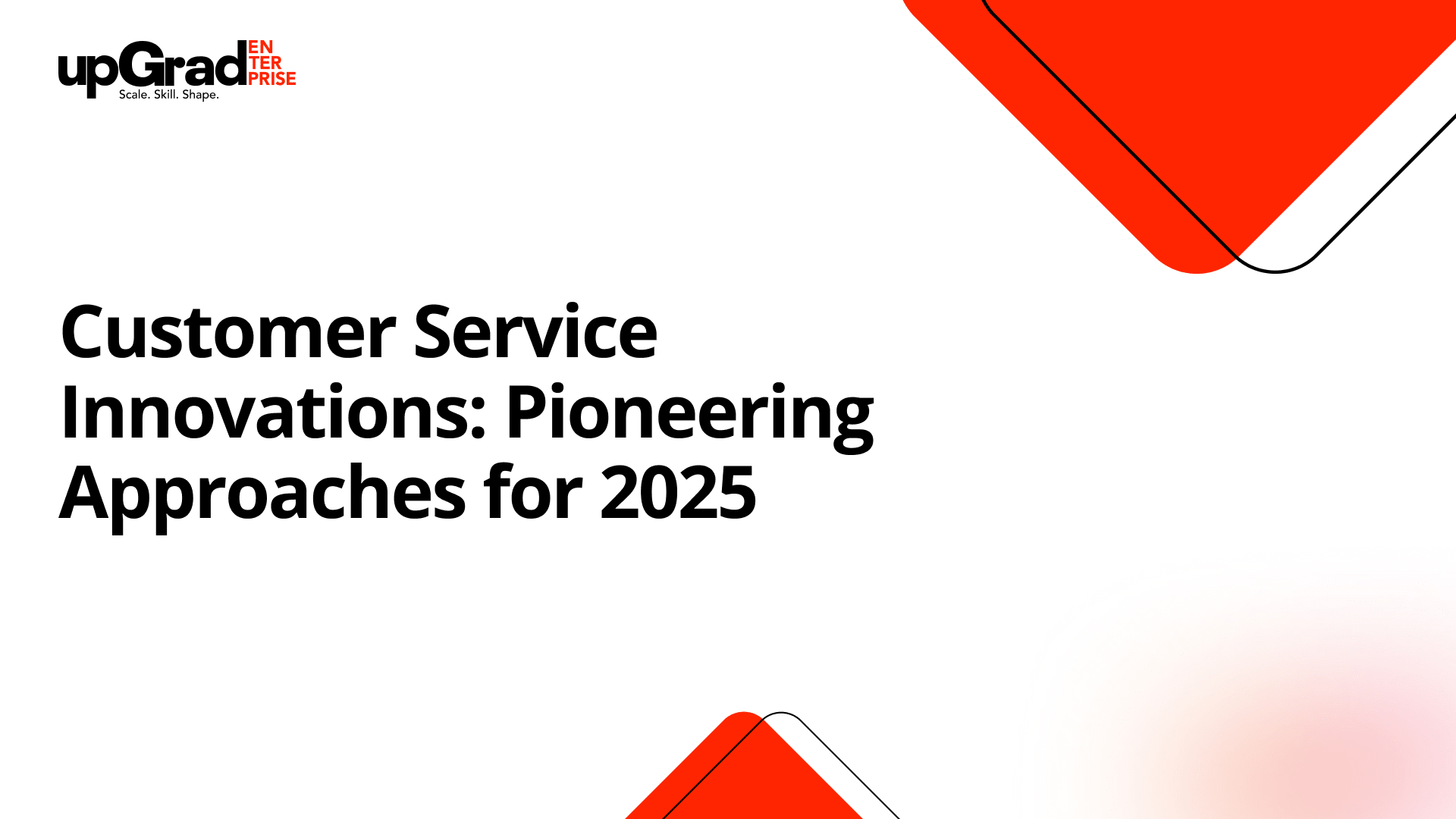Are you ready to meet the customer service demands of tomorrow?
As we approach 2025, a report by Microsoft reveals that 77% of consumers expect proactive service tailored to their needs and preferences.
This statistic underscores a critical shift: the transformation of customer service from a reactive to a proactive strategic asset, fueled by groundbreaking technologies and evolving customer expectations.
In this article, we explore cutting-edge innovations that are defining the future of customer service. From AI-driven support systems that predict customer inquiries before they happen to blockchain technology ensuring unparalleled data security, these advancements are not just enhancements—they are complete game changers.
Join us as we delve into the latest trends, technologies, and strategies revolutionizing customer interactions. With expert insights and global case studies, this guide is an indispensable resource for customer service managers, business leaders, and tech innovators aiming to harness these innovations to improve customer satisfaction, streamline operations, and secure a competitive edge in a rapidly changing world.
Understanding the 2025 customer service landscape
As businesses prepare for the future, understanding the evolving landscape of customer service is crucial.
The integration of advanced technologies and changing consumer behaviors are reshaping the way companies interact with their customers.
Key trends shaping customer service
The customer service industry is witnessing several pivotal trends that are dictating the direction of its evolution:
- Artificial intelligence (AI): AI continues to be a game-changer, offering smarter, more responsive customer interactions. Gartner predicts that by 2025, customer service organizations that embed AI in their multichannel customer engagement platforms will elevate operational efficiency by up to 25%. (source)
- Omnichannel experience: Customers expect seamless service across all platforms. A study from Adobe shows that companies with the strongest omnichannel customer engagement strategies enjoy a 10% year-on-year growth, a 10% increase in average order value, and a 25% increase in close rates.(source)
- Personalization: Tailoring service to individual needs is no longer a luxury but a necessity. Personalized customer interactions can reduce churn and increase customer lifetime value, making it a critical strategy for businesses.
Challenges in modern customer service
Despite these advancements, several challenges persist in the realm of customer service:
- Data privacy and security: With increasing reliance on digital platforms, businesses must navigate the complexities of data security and privacy laws.
- Skill gaps: As technology evolves, there is a growing need for skilled professionals who can manage and optimize new customer service tools effectively.
- Customer expectations: Today's consumers are more informed and demanding. Meeting these high expectations consistently poses a significant challenge for many businesses.
By addressing these trends and challenges, companies can better prepare themselves for the future, ensuring that their customer service operations are not only effective but also resilient and adaptable to change.
Innovative technologies transforming customer service
The technology landscape is rapidly evolving, bringing about transformative changes in how customer service is delivered.
Here, we explore several key technologies that are at the forefront of this transformation, offering not only improved efficiency but also a more personalized customer experience.
AI-driven customer support
Artificial intelligence is revolutionizing customer service through the automation of interactions and the personalization of customer experiences. AI-driven tools, such as chatbots and virtual assistants, are capable of handling a multitude of routine queries in real-time, freeing up human agents to tackle more complex issues.
Advanced analytics for customer insights
Modern CFOs are expected to go beyond traditional finance functions and contribute to customer-centric growth strategies. Advanced analytics enables finance leaders to unlock deeper insights into customer behavior, lifetime value, and profitability—driving smarter forecasting, cost control, and growth planning.
Rather than simply tracking touchpoints, today’s analytics platforms integrate real-time customer data to predict churn, model customer lifetime value (CLTV), and assess the ROI of marketing and service investments.
Strategic implementation steps: (or retitle as “Executive-level analytics integration”)
- Data consolidation across customer ecosystems
Aggregate data across CRM systems, digital platforms, and transactional records. For CFOs, this creates visibility into revenue-driving segments and cost-heavy cohorts.
- Advanced analytical modeling
Deploy predictive models such as churn forecasting, CLTV estimation, and cohort analysis. These insights inform strategic decisions like dynamic pricing, personalized offers, or resource allocation.
- Insight-driven decision making
Embed customer insights into financial planning processes. Use them to inform CAC:LTV ratios, forecast revenue scenarios, and identify margin improvement opportunities through customer segmentation.
Blockchain for enhanced security and privacy
Blockchain technology is increasingly being adopted in customer service for its ability to secure transactions and protect data privacy. This technology offers a decentralized approach to data management, making it nearly impossible for data to be tampered with.
These technologies not only support the operational aspects of customer service but also ensure a safer and more reliable customer experience. By adopting these innovative solutions, businesses can not only meet but exceed the evolving expectations of their customers.
Strategies for implementing new customer service solutions
Adopting new technologies is crucial for staying competitive, but the implementation process can be challenging.
To build truly future-ready customer service teams, organizations must invest in leadership and diversity development, empowering individuals to innovate, empathize, and drive impact at every customer touchpoint.
Here, we also outline effective strategies to ensure the smooth integration of innovative customer service solutions into existing systems.
Developing a customer-centric approach
To truly benefit from new technologies, businesses must maintain a customer-centric focus throughout the implementation process.
This involves understanding customer needs and designing solutions that not only address these needs but also enhance the overall customer experience.
- Tips for training staff on new technology:
- Comprehensive training programs: Develop detailed training sessions that cover both the technical aspects of the new tools and the customer service principles that guide their use.
- Ongoing support and feedback loops: Establish support systems for staff to provide feedback on the technology's effectiveness and areas for improvement.
Overcoming implementation challenges
Transitioning to new customer service technologies can encounter several obstacles, from resistance among staff to technical setbacks. Here are ways to address these challenges:
- Addressing staff resistance:
- Involvement in change process: Include employees in the decision-making process, helping to mitigate resistance by giving them a sense of ownership.
- Highlight benefits: Clearly communicate how new technologies will make their jobs easier and improve service outcomes.
- Technical setbacks:
- Pilot Programs: Implement technology in phases through pilot programs to identify potential problems and address them before a full rollout.
- Partner with Experts: Work with technology providers who can offer expert guidance and support throughout the implementation process.
Future outlook and evolving concepts in customer service
As we look toward the future, the field of customer service is poised for even more transformative changes.
Emerging technologies and evolving customer expectations continue to drive innovation, setting the stage for new concepts that will redefine how businesses interact with their customers.
What’s next for customer service innovations?
The next wave of customer service innovation is likely to be influenced by several key developments:
- Augmented reality (AR) and virtual reality (VR): These technologies are beginning to play a role in customer service by providing immersive experiences that can aid in product selection, troubleshooting, and customer education.
- Internet of things (IoT): As more devices become connected, the IoT will offer new opportunities for proactive customer service, such as appliances that notify service centers before a malfunction occurs.
- Voice technology: With the rise of voice-activated assistants, businesses are exploring ways to integrate voice commands into their customer service, making it even more accessible and intuitive.
Preparing for the future of customer interaction
To stay ahead of these trends, companies must adopt a proactive and innovative approach:
- Continuous learning and adaptation: Organizations should invest in ongoing training and development to keep their customer service teams knowledgeable about the latest technologies and customer interaction strategies.
- Strategic partnerships: Collaborating with tech companies and service providers can provide businesses with the expertise and tools needed to implement advanced customer service solutions.
- Customer-centric culture: Building a culture that prioritizes customer needs and values feedback is essential for continuous improvement and innovation.
Closing thoughts on building a culture of continuous innovation
In an ever-changing landscape, the ability to innovate continuously is crucial for maintaining excellence in customer service. Businesses that cultivate a culture of innovation and are willing to experiment with new approaches will be best positioned to meet the challenges of the future and deliver exceptional customer experiences.
By anticipating future trends and preparing accordingly, businesses can ensure that they not only keep up with the pace of change but also set new standards for excellence in customer service.
Final thoughts
As we have explored throughout this article, the realm of customer service is undergoing a significant transformation, driven by technological advancements and changing consumer expectations.
The innovations discussed, from AI-driven customer support to blockchain for enhanced security, are not just enhancing customer interactions—they are setting new standards for the industry.
Summary of key points
- AI and Advanced Analytics are streamlining customer interactions and providing deeper insights into customer behaviors and preferences.
- Blockchain Technology offers unprecedented security and transparency in customer transactions and data management.
- Emerging Technologies like AR, VR, and IoT are poised to further revolutionize the customer service landscape by offering more immersive and proactive support solutions.
FAQs
1. What are the key benefits of integrating AI into customer service?
Answer: Integrating AI into customer service offers several key benefits, including enhanced efficiency through automation, improved accuracy in customer query resolution, personalized customer interactions, and the ability to analyze large volumes of data to gain insights into customer preferences and behaviors.
2. How can blockchain technology improve customer service?
Answer: Blockchain technology enhances customer service by providing increased data security and privacy, reducing the risk of fraud, and offering transparent transactions. It ensures that customer information is securely managed, building trust and improving the overall customer experience.
3. What future technologies are likely to impact customer service soon?
Answer: Augmented Reality (AR), Virtual Reality (VR), and the Internet of Things (IoT) are poised to have a significant impact on customer service. These technologies can provide more interactive and immersive customer support, enable proactive service delivery, and streamline the customer journey through more connected devices.
4. How can businesses prepare for the evolving landscape of customer service?
Answer: Businesses can prepare for the evolving customer service landscape by staying informed about emerging technologies, investing in training and development for their customer service teams, fostering a culture of innovation, and engaging in strategic partnerships to access new tools and expertise. Emphasizing a proactive approach to adopting new technologies will be crucial for adapting to and capitalizing on future customer service trends.









